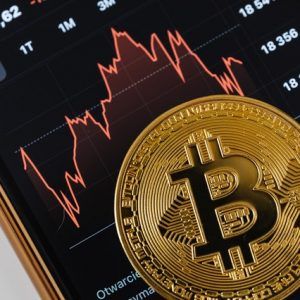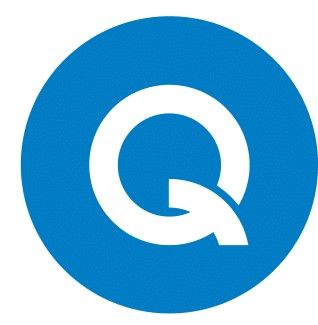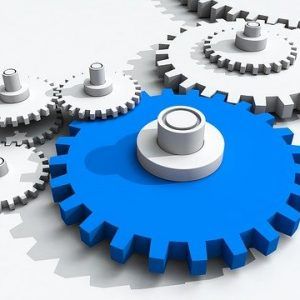By Eni Chantal
The politics
Do you know where corruption deals end up? Who transacts the amount and how much do they transact in real-time? Is there a system without a centre of control to change, manipulate, or delete that information? There is one: a system that is above the laws of any government: Blockchain.
If Kenyans chose me to lead my beloved motherland, Kenya, I would start with overhauling leadership models so that I empower each citizen in every form. The current ways of doing things have created and sustained a mindset of “serikali nisaidie” (government help me). This reasoning makes people dependent and disempowered, which enables a chain reaction that is taught to impressionable young minds. Breaking that cycle is another article, altogether.
The technology
“Blockchain gives leverage to the people.” ~Lucky Uwakwe
So what is blockchain? Glad you asked. Think of it as a specific type of database used as a ledger for transactions. Not all databases are blockchains, but all blockchains are databases. The major difference between the two is that one is structured into tables like Google sheets, the other is structured into groups also called blocks, which are chained together in an irreversible timeline. Hence a blockchain. A popular use for this application is cryptocurrency, but we’ll get into that later.
You could trace the origins of the blockchain technology back to the cryptography work conducted by W. Scott Stornetta and Stuart Haber in their journal (1991). The two scientists’ goal was to develop a system where no one would change a document’s timestamps. It was conceptualized years later, as we will see later on.
Source: Theymos
A blockchain can store different information: payments and transactions; legal contracts; product inventories; votes in an election; state identification; title deeds, and much more which I wrote in my blog. Some are centralized, others are decentralized. Let us look at the decentralized version. The beauty about them is their transparency, and constant checks each node must make to confirm a record of information in the best interests of the majority. A node is a point of connection in a telecommunications network. In simple terms, it can be your personal computer. Pheew.
In theory, a group of nodes can become a majority stakeholder and own 51% of the copies in the decentralized blockchain. However, its transparency would render that show of might fruitless because other node members would create a fork (breakaway) of said blockchain and the altered, ‘insecure’ version would lose its value. The point here is the more nodes created on a blockchain, and the more regular users like you and I run it, the more decentralized it becomes. Meaning more individuals require education in the tech fields, which is yet another article. Do you see the contrast between decentralized and centralized versions? Decentralized blockchains are how I can empower Kenya one block at a time.
The environmental
The most popular application for blockchain has been the famous (or infamous) Bitcoin: the dominant cryptocurrency. We all use paper money, so let’s not go on about the hygiene there. Money built on a blockchain is digital. Yes, minting it requires quite an amount of electricity. But there are other cryptocurrencies that require lower amounts of energy.
Put this into perspective and look up the numbers of how much energy is used to build brick and mortar banks to access your money, the transport used to go back and forth, and how much space paper money takes in your physical wallet (just kidding). You can get all of that from the comfort of your home, right from your gadget.
The motivation for the birth of Bitcoin started with the 2008 global economic crisis. The creator, Satoshi Nakamoto, felt that the U.S. government kept over issuing currency (paper), which is unsustainable and causes inflation. So, he put a cap on the supply of Bitcoin ever mined to 21 million. Many other cryptocurrencies have similar amounts of caps to their supply.
The ethics
We would get to know firsthand how a government officer siphoned funds into their wallets, where they took the money, what they used it for, and, of course, how to get it back with blockchain. This would haul the entire country into a new era of transparency and accountability. Would it enhance our ethics? Probably. Research shows that when humans feel watched, they act better.
On the other side of the coin, more empathy for a system that is fixed and trustless is crucial. It’s a system that doesn’t know the nuances of how humans interact.
Blockchains have now grown into a multi-million-dollar industry (when you add crypto) with several companies using it or considering it in their portfolio. All you need is the internet and a personal computer or phone to transact with crypto without an authority looking over your shoulder. You might say the authority is there to limit money laundering and terrorism. However, check the stats on how much fraud criminals transact through the banks (authority). Aren’t the proceeds of corruption passed through banks?
The takeaway
Blockchain seems to solve a bunch of issues: political, technological, environmental, and ethical. Economical too, all to empower people to protect their earnings, for example, from governments and central authorities that could harm live-savings through irresponsible policies.
Empowering individuals with this knowledge is how I can empower Kenya one block at a time. This is a protest worth standing for. Will you stand with me?
I’m Chantal, a Kenyan, and this is my protest.
***
Eni Chantal is an author who’s passionate about the authentic self. She is a cryptocurrency educator in the crypto space. Her e-book is called ‘An Angle of Truth’.





